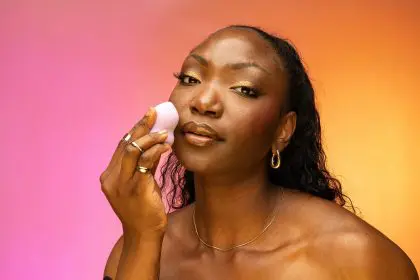You’ve been blaming your tired-looking face on late nights, poor sleep, or just getting older, but what if your reflection is actually showing you the early warning signs of adrenal dysfunction that most people miss until they’re completely burned out? Your face is like a biological billboard advertising your stress hormone levels, and learning to read these signals could help you catch adrenal fatigue before it completely derails your energy and health.
The connection between chronic stress and facial appearance isn’t just vanity – it’s biology. Your adrenal glands produce hormones that affect everything from skin texture to facial puffiness to the color and clarity of your complexion. When these small but mighty glands start struggling under chronic stress, your face often shows the damage weeks or months before you feel the full-body exhaustion that characterizes advanced adrenal fatigue.
Most people spend hundreds of dollars on skincare products trying to fix facial symptoms that are actually internal hormone problems. You can use all the expensive creams and serums you want, but if your adrenals are struggling, your face will keep broadcasting your stress levels until you address the root cause rather than just treating the surface symptoms.
The dark circles that aren’t just about sleep
Those persistent dark circles under your eyes might have less to do with your sleep schedule and more to do with your adrenal glands’ inability to properly regulate inflammation and blood flow. When your adrenals are overworked, they can’t effectively manage the inflammatory responses that cause blood vessels under your thin under-eye skin to dilate and create that telltale darkened appearance.
Adrenal fatigue also affects your body’s ability to regulate fluid balance, leading to poor circulation that contributes to the dark, sunken appearance around your eyes. This is why some people have dark circles even when they’re getting adequate sleep – their adrenal glands aren’t functioning well enough to maintain proper blood flow and tissue health in these delicate areas.
The skin around your eyes is some of the thinnest on your body, making it particularly sensitive to the inflammation and circulation problems that develop when stress hormones are chronically elevated or depleted. This makes the eye area one of the first places where adrenal dysfunction becomes visible, often appearing months before other symptoms develop.
The dull, lifeless complexion that makeup can’t fix
Healthy adrenal function is essential for maintaining the cellular energy production that gives your skin its natural glow and vitality. When your adrenals are struggling, your cells can’t efficiently produce the energy needed for optimal skin cell turnover, collagen production, and the cellular repair processes that keep your complexion looking fresh and radiant.
Chronic stress and adrenal dysfunction also impair your body’s ability to absorb and utilize nutrients that are essential for healthy skin, including vitamins A, C, and E, zinc, and essential fatty acids. Even if you’re eating a healthy diet, adrenal fatigue can prevent your body from properly using these skin-supporting nutrients, leading to a dull, lackluster complexion that doesn’t respond well to topical treatments.
The hormonal imbalances associated with adrenal fatigue can also affect sebum production and skin pH, creating conditions that make your skin look tired and aged regardless of how much you sleep or how expensive your skincare routine is. This is why addressing adrenal health often produces dramatic improvements in skin appearance that no amount of external products could achieve.
The facial puffiness that’s actually hormone-related
Morning facial puffiness that doesn’t resolve quickly might be a sign that your adrenal glands aren’t properly regulating cortisol and aldosterone, hormones that control fluid balance and inflammation throughout your body. When these hormones are out of balance, your body tends to retain excess fluid, particularly in your face and around your eyes.
Adrenal dysfunction can also affect your kidneys’ ability to properly filter and eliminate excess fluid, leading to the kind of facial swelling that makes you look bloated and tired even when you haven’t been eating salty foods or drinking excess fluids. This puffiness is often most noticeable in the morning and may improve throughout the day as your compromised adrenal glands struggle to restore normal hormone balance.
The inflammatory responses triggered by chronic stress and adrenal fatigue can also cause facial tissues to retain fluid as part of your body’s attempt to manage ongoing cellular damage. This creates a cycle where stress causes inflammation, inflammation causes puffiness, and the puffiness creates additional stress about your appearance.
The premature aging that stress accelerates
Chronic adrenal dysfunction accelerates the aging process in ways that show up first in your facial skin, which is constantly exposed to environmental stressors and has fewer oil glands to maintain moisture and protection. Elevated cortisol levels break down collagen and elastin faster than your body can replace them, leading to fine lines, wrinkles, and loss of skin elasticity that can make you look years older than your actual age.
The oxidative stress associated with adrenal fatigue also damages skin cells and impairs your skin’s natural repair mechanisms, leading to age spots, uneven skin tone, and the kind of weathered appearance that’s usually associated with excessive sun exposure or advanced age. This cellular damage accumulates over time, making early intervention crucial for preventing permanent skin aging.
Sleep disruption caused by adrenal dysfunction compounds these aging effects because your skin does most of its repair and regeneration during deep sleep phases. When chronic stress prevents restorative sleep, your skin doesn’t get the recovery time it needs to maintain its youthful appearance and resilience.
The breakouts that aren’t teenager acne
Adult acne that appears along your jawline, neck, and lower face might be related to the hormonal imbalances that develop when your adrenal glands are overworked. Chronic stress can trigger increased production of androgens, hormones that stimulate oil production and can lead to cystic acne that’s painful, persistent, and doesn’t respond well to typical acne treatments.
The inflammatory responses associated with adrenal fatigue can also make your skin more reactive and prone to breakouts, even if you’ve never had significant acne problems before. This stress-related acne often appears suddenly during periods of high stress and may persist even after the immediate stressor is resolved if underlying adrenal dysfunction isn’t addressed.
Adrenal fatigue can also affect your skin’s ability to heal from breakouts, leading to scarring, hyperpigmentation, and prolonged recovery times that make acne problems more persistent and noticeable than they would be with healthy adrenal function.
The facial muscle tension that changes your expression
Chronic stress and adrenal dysfunction often manifest as persistent tension in your facial muscles, particularly around your jaw, forehead, and eyes. This constant muscle tension can change your resting facial expression, making you look worried, angry, or exhausted even when you’re feeling relatively calm.
The muscle tension associated with adrenal fatigue can also contribute to headaches, TMJ problems, and the kind of facial tightness that makes you look stern or unapproachable. Over time, this chronic tension can create permanent expression lines and contribute to an aged or harsh facial appearance that reflects your internal stress levels.
Many people don’t realize how much facial tension they’re carrying until they start addressing their adrenal health and notice that their face feels more relaxed and their expression appears softer and more approachable. This change in facial tension can dramatically improve how others perceive you and how you feel about your appearance.
The color changes that reveal internal dysfunction
Adrenal fatigue can affect your skin’s natural color and tone in ways that make you look sallow, gray, or generally unhealthy. Poor circulation associated with adrenal dysfunction reduces the natural pink or rosy tones that indicate healthy blood flow, leaving your complexion looking flat and lifeless.
The nutritional deficiencies that often accompany adrenal fatigue can also affect skin pigmentation, leading to uneven skin tone, dark spots, or the kind of pale, washed-out appearance that no amount of makeup can fully correct. These color changes often develop gradually, making them easy to dismiss as normal aging when they’re actually indicators of internal hormone imbalances.
Some people with adrenal dysfunction also develop hyperpigmentation, particularly around their mouth, nose, or forehead, as their body struggles to regulate melanin production in response to chronic stress and hormonal fluctuations.
The recovery signs that show your adrenals are healing
When you start addressing adrenal fatigue through stress management, nutritional support, and lifestyle changes, your face is often the first place where improvements become visible. Your skin tone may become more even, dark circles may lighten, and that overall tired appearance may start to lift as your hormone balance improves.
The timeline for facial improvements varies depending on how long you’ve been dealing with adrenal dysfunction and how comprehensively you address the underlying causes, but many people notice changes in their complexion within weeks of implementing adrenal-supporting strategies. This makes your face a useful barometer for tracking your recovery progress.
Understanding the connection between your facial appearance and adrenal health can help you recognize when you need to prioritize stress management and self-care before minor symptoms develop into more serious health problems. Your face is essentially providing free health monitoring that can guide you toward better hormone balance and overall wellness.

















